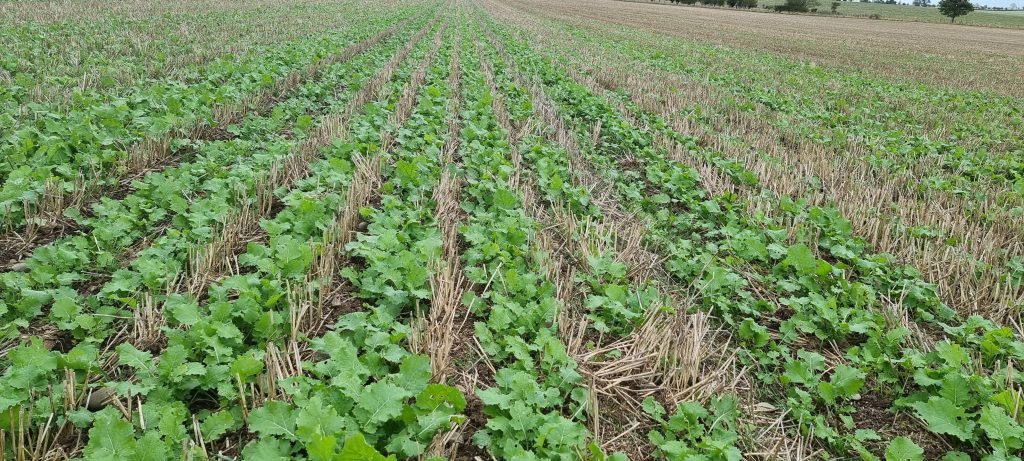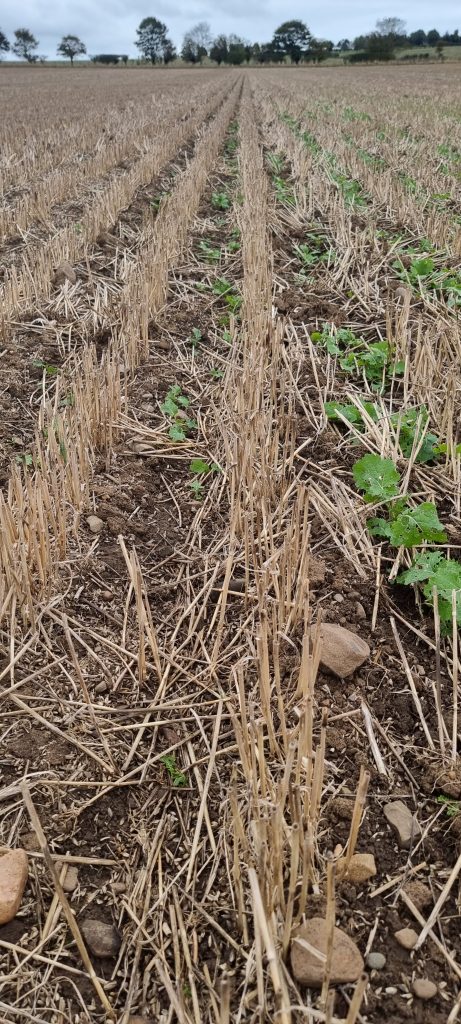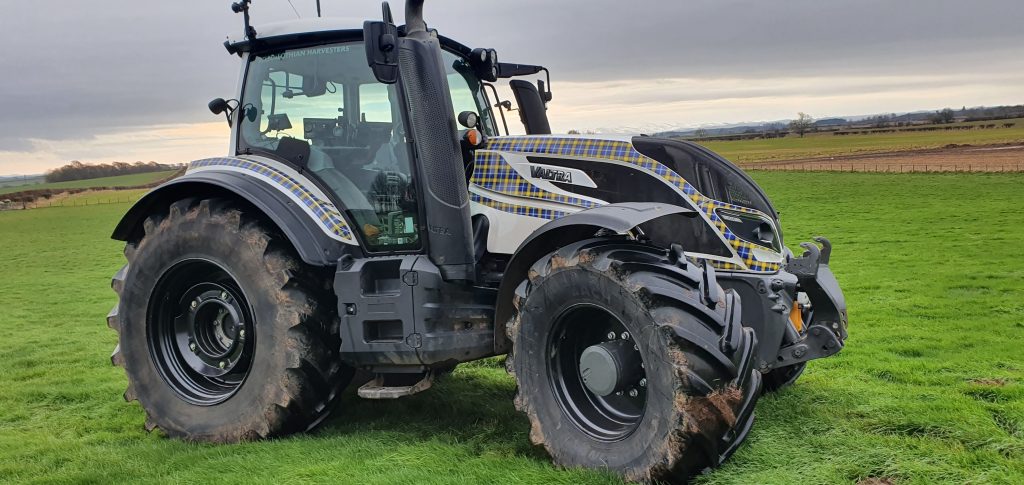January 2023
As I write on this very wet December day (yes very last minute) it’s nice to look back on such a dry year. I wrote in June that the area looked the best it had ever looked, crops were full of potential, and for once they carried that into what was our record-breaking hottest and driest harvest ever. We had a great harvest, with good yields, quality and prices, my best ever but I will try not go on about that! I do think we have to enjoy these harvests not just push on and quickly forget how important and rewarding they can be.
Once again, the direct drilled crops did as well or better than the ploughed ground crops and this has given me the confidence to finally direct drill all my winter crops at home this year. Using the Mzuri to sow everything allows me to use variable rate seed rates and add a starter fertiliser as required. I also plan to direct drill all my spring crop too making it a 100% for the first time. It doesn’t sound like a big deal, but I grow winter brewing barley following wheat in my rotation, so a good chit is essential. I gave the ground a late straw rake, a tool I would never be without as its now my only pre-drill machine and I think I achieved as good a chit as possible in the very dry conditions, time will tell. I have other direct drilled winter barley, but it follows spring barley so not such an issue. Ground conditions at sowing were first class, the ground despite being very dry had a nice tilth and a crumbly texture with moisture below that due to the lack of soil movement. I have been using my penetrometer this autumn to help make an informed decision on how deep to run the leading leg on my Mzuri. I have been reassured that the dry harvest and my improving soils have meant that I have been able to raise the leg 1 to 2 inches in most wheat fields, saving metal and fuel.
This autumn I was asked to join a Profit and Biodiversity group, government funded through Nourish Scotland, the facilitators get the money not the participants, maybe it is us who are being farmed? We have had one on farm meeting, next one is here, and some online ones too. These meetings have been very informative and have created some very interesting discussions, but I do feel that we are really choosing between maintaining production or vastly reducing it. I had hoped by cutting out almost all tillage, maintaining my hedgerows, margins, pond etc, having renewables provide power and heat, I could continue to grow for the market and tick enough boxes to prove that what I do provides the smallest environmental footprint for the desired outcomes. Am I producing to my Maximum Sustainable Output? I think I am, maybe others disagree!

In June I was cajoled by colleagues to enter the Agriscot arable farmer of the year competition. I enjoyed the process, and the judges visit in July made me look and think hard about my farm and my system, this can only be a good thing. In the end I didn’t win, I was one of 2 runners up. A patron of the Direct Driller magazine, Colin McGregor from McGregor farms was the worthy winner. I think the fact I made it to the final reflects the success of the system I run and the huge soil health and margin improvements made, but also the acceptance that this is a direction we can/must go in to satisfy those who demand change from us. I was recently offered a wheat contract which paid a premium for soft wheat produced in a system like mine. It was a decent premium and I’m already doing the practices required, but my concern is that this is how quality assurance was first sold to us and now it’s mandatory. Once again, we must make sure we are not the ones being farmed.
I recently took part in a Q and A session with SRUC which was very well attended. Four farmers with different systems doing varying degrees of reduced tillage. The answers given were honest and varied, at events like this I always think of DD editor Chris telling me that I could write whatever I like, as long as it is true, and reflects what is actually going on at my farm. I think this advice rings true through the farmer discussions and is the only way to make knowledge transfer worthwhile.
On that note, I have been putting in stubble turnips again hoping to graze next doors sheep on them over the winter. I have had very mixed results this year. My field at home, sown in 10 x 1-acre blocks with 3 metres between for electric fencing, seed went into great conditions but has not been a great success. At least half the area has already been completely decimated by slugs, flee beetle and pigeons.
This will mean a rather poor negotiating position for me in the deal. These are low input, seed and sowing cost only, no spray or fertiliser. The idea is to use these to tidy up hedge backs, put dung onto the ground and make a pound or two on the way, looks like it will achieve only the first two goals. The cover crops however have done well this year. My mix of home saved spring beans, radish, phacelia, buckwheat and clover is looking strong going into winter and is looking like it may provide some grazing opportunities, but only if the weather stays dry. I have found in the past grazing cover in a wet winter caused capping of the soil in any areas where crops were thinner. I will be careful this year as this cover will be direct drilled with Diablo malting barley rather than spring oats.

I have done some demo and contract work again this year. I do get asked to sow wheat direct into grass leys, this works well but is something I can’t do at home as I don’t have grass. It always feels strange doing work for others that I don’t do at home. It is a wide row spacing with the single coulter but if the conditions are right the plants fill that space in spring and the feedback has been good. I also did some winter beans direct into cereal stubble. The farmer was looking to direct drill without subsoiling tramlines or compacted areas as they had done in the past. I ran the front leg in deep at around 6 inches and the coulter 3 inches which does use more fuel, but he says the crop looks very even across the whole field.
I will say it again this year, this area has never looked greener or better, and hopefully like last year that carries on through harvest. We will need good crops and margins to provide some resilience for whatever comes down the line.
Sadly, this week we lost a great friend to MND. Doddie Weir was a family man, a farmer, a Melrose RFC teammate, a Scottish and British Lion legend and for the last 6 years an amazing campaigner and fundraiser for MND through his charity the My Name’5 Doddie Foundation. The My Name’5 Doddie tartan was designed on this farm by my wife’s business, ScotlandShop, taking Doddie’s idea and designed in-house by Emily Redman. It is worn by millions around the world to raise awareness of MND and will continue to be worn by my tractor for years to come. Like him it raises a smile wherever it goes. Thanks for everything Doddie.


